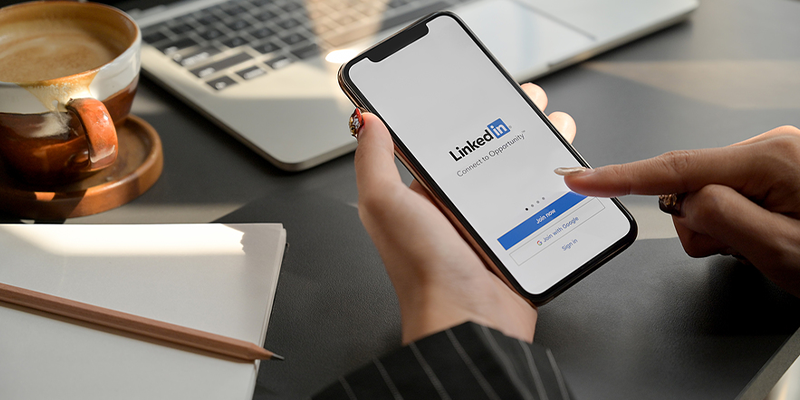
Should My LinkedIn Profile Be the Same as My Resume?
A conundrum that many job seekers face is whether they should match the content of their resume to their LinkedIn profile. How important is it to create symmetry between these two vital components of your job search materials?
“Your resume is a static document that is tailored specifically to one job at one company and your LinkedIn profile is an evolving, living-breathing version of yourself that is a bit broader so you can market yourself to many jobs and companies,” explains FlexJobs and Remote.co career coach, Cidnye Work.
As you prepare your application materials, here are five ways to make the best use of both your resume and your profile on LinkedIn.
1. Assume the Hiring Team Will See Both
One point to keep in mind is that the key players in your job search—recruiters, employers, and hiring managers—will most likely have access to your resume and your LinkedIn profile. This is particularly true if your resume is also online.
Even if you only provide your resume, without a link to your LinkedIn profile, research shows that the vast majority (87%) of recruiters use LinkedIn. So if you haven’t taken the time to update your LinkedIn profile, or if you have positions listed in your profile that you prefer not to highlight for your current job application, you should assume that recruiters and hiring managers will find and notice these inconsistencies.
2. Standardize for a Good Impression
There may be specific instances when it makes sense to have slight variations between your resume and your LinkedIn profile. For example, if you need to keep your resume to a one-page format, but you have additional job experiences listed in LinkedIn. In most cases, though, employers will appreciate consistency in your representation of your work history.
Keeping the details in sync helps show that you are organized and thorough, which are both important traits for candidates. On the other hand, if you have vast discrepancies in your employment history between your resume and your LinkedIn profile, it gives the opposite impression.
3. Make Use of Your Space
Both your resume and LinkedIn profile may require formatting that makes it difficult to simply duplicate the content from one to the other. For example, LinkedIn has character count restrictions for various sections of the profile, such as employment history, which means you may not be able to fit your resume’s perfect description of your job duties into LinkedIn’s template. LinkedIn also offers options for sections such as awards and volunteering that you may not plan to include on your resume.
Similarly, if you’re aiming to create a one- or two-page tailored resume, then space considerations may limit your ability to mimic your LinkedIn job descriptions in the resume format. If this happens, you can still create symmetry between your documents by keeping the sentences that remain the same, while trimming the lines that don’t fit. For example, if you have five lines of description of your current position in your resume but only four lines fit in the character count on LinkedIn, trim the final line rather than editing the entire description down.
4. Keep Key Points the Same
While formatting issues may make it challenging to rubber stamp your resume as identical LinkedIn profile content, what’s most important is to avoid variation in key elements of your employment, such as:
- Employment dates
- Gaps for dates you weren’t working
- Company names
- Job titles
- Numerical data points
If you confuse a recruiter or hiring manager with discrepancies between your resume and LinkedIn profile, they may relegate you to the rejection pile rather than contact you for an interview.
“You do want to make sure that your LinkedIn information matches your resume in terms of job titles, dates of employment, education, etc.,” says Work. “There have been many times I have seen people with different dates of employment on their LinkedIn and resume and that shows cause for concern. So make sure you are double and triple-checking factual information to ensure it matches in both places.”
5. Use LinkedIn Features
However, you can still maximize the potential of your LinkedIn profile while staying consistent on key points. Even something as seemingly simple as your profile’s headline can reinforce points in your resume and help you stand out to the hiring team.
“As you continue to learn more about yourself and how you want to be presented as a professional your LinkedIn profile will change and evolve. You have more opportunity and leeway on your LinkedIn than your resume,” says Work.
LinkedIn presents an opportunity for candidates to go beyond the words of their resume to enhance their brand—particularly by leveraging graphics and making use of underutilized features like the background image behind your profile photo.
Work adds, “Your resume can only tell so much information and it is about what things you have done already, while your LinkedIn really gives you more of an opportunity to show your interests, passions, motivations, and more about what you hope to do and want to do.”
Similar but Different
The bottom line is, you want to present consistent messaging between your resume and LinkedIn profile and avoid any discrepancies that could make you appear careless or unprofessional. By leveraging the special features in LinkedIn to enhance your brand and amplify your resume’s messages, you can create an even better impression with the hiring team.
Need help getting all your job application materials in order? For career guidance, job search tips, resume reviews, and more, schedule a session with one of our expert in-house career coaches!
Book Now>
By Robin Madell | Categories: Work Remotely



